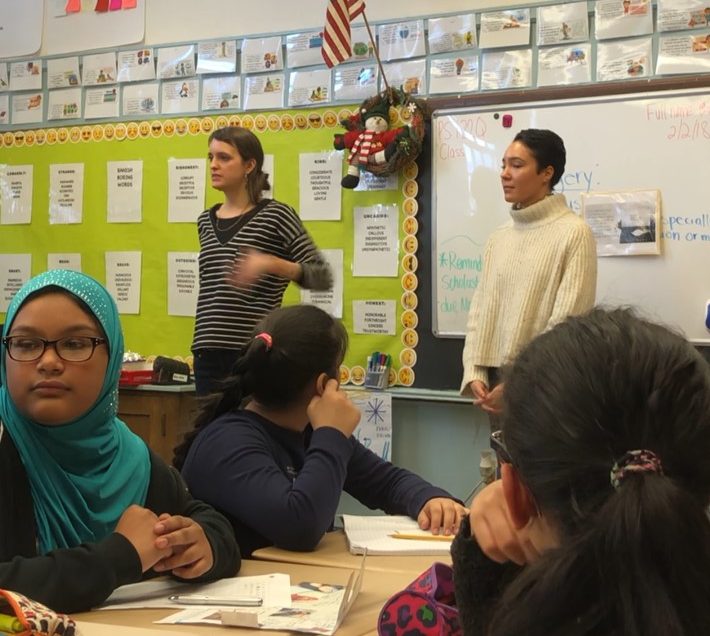In one of my first writing classes as a new teacher, I instructed the students to write about anything “red.” I thought this would allow the class to exercise their imaginations and would provide a variety of stories for us to develop together as a class.
I spent the session tending to those students who asked for my help, oiling all those squeaky wheels and feeling very busy and productive. As the bell rang out and the students stood to leave, there was a babble of excited chatter as the class shared their infant stories as they moved onto their next class. I must admit I felt quite smug thinking that I had inspired and entertained my class, until I noticed one small figure at the back of the class hunched over his book. The paper was damp with tears and blackened with repeated pencil marks that had been erased over and over again. He was trying desperately to smooth out tiny holes he had made with wear and looked up forlornly as I approached.
“I can’t think of anything,” he whispered sadly.
Adults assume all children can use their imaginations freely, but this experience and thirteen subsequent years of teaching have taught me that for many children, creativity does not come naturally.
Introverted or shy children can find it especially intimidating to be told to “write about anything,” and open assignments can fill them with dread.
The repercussions for some of these children are much worse than simply being left with a blank page. They can suffer from anxiety and even stress-related illnesses. Once students begin to think of themselves as uncreative or not having an imagination, it can become a self-fulfilling prophecy, as inspiration is unlikely to strike in such tense conditions.
How can we allow students the space to explore their creativity and gently draw out talent from the unwilling and insecure?
Read on for 10 tips to unleash the inner artist in the introverted student:
1. A Caring Classroom
First, you need to create the right environment for creativity to flourish. Your classroom must be an accepting space where students feel confident to express themselves. Create a caring classroom where negative talk is never allowed, whether from one student to another, from teacher to student, or between students.
2. Praise
Give genuine praise regularly. How do you ensure your praise resonates with students? Make it personal. Generic terms such as “good job” should be replaced with more customized compliments, such as “I love the adjective you used here,” or “this character really made me laugh.”
3. Diversity is the spice of life
Celebrate a variety of creative pursuits and artists. Show your class that artists, singers, sculptors, writers, poets, and actors all create story and meaning with their work. Select work that reflects the variety of ethnicities, nationalities, gender, and backgrounds found in your class.
4. Frame and scaffold activities
Open-ended assignments can be daunting for many students. You can make them more accessible by providing visual and verbal modeling and breaking the topic into manageable tasks. Always ensure understanding by allowing time for students to share their progress, ask questions, and reflect on their learning.
5. Student Self-Audits
Allow opportunities for positive self-reflection and evaluation. Provide students with self-audit templates that only allow feedback to be added in a positive tone. For example, provide sentence starters such as “I am proud of______,” “Next time I would like to…”
6. Art is Not Static
Encourage students to view all art as developing. Show how writers improve on drafts and share artists’ own interpretations of their early work and how they made improvements as they grew in confidence and skill. Give students the opportunity and time to edit and rework their stories and find their own voice.
7. Share Mistakes
Be prepared to share your own mistakes so that students understand writers at all levels can refine and polish their stories, ideas, language choice, and direction. When working together on shared writing, purposefully make mistakes, erase words, and ask the class to help you think of a more vivid term, description, or profile. Ensure students understand that the written word is not always permanent and can be molded and manipulated to perfection.
8. Read More
Every great writer knows that in order to write well, you must read voraciously. Stock your classroom library with a diverse and vibrant selection of stories, poems, and non-fiction titles. Reference other writers often and discuss your favorite writers and what bestselling or celebrated authors are reading.
9. Build confidence
Encourage students to share their work aloud, if they are comfortable doing so, by creating a considerate and caring audience. Reward students who listen respectfully, ask appropriate questions, and show support towards others.
10. Genre
Allow your class the opportunity to create work in a variety of genres and formats: longer stories, limericks, poems, job advertisements, newspaper articles, blog posts, short stories, and more.
And a bonus tip:
Be playful by organizing games and physical activities that promote creativity, such as:
- Throw a ball decorated with adjectives.
- Match synonyms and antonyms and then choose one to create a sentence.
- Draw a picture of a character, swap with a partner, and then write a description based on the sketch.
- Use art as a stimulus to writing; e.g., a landscape description, a character profile from a portrait, a sculpture coming to life, a piece of music playing when two characters meet.
- Have a conversation with a partner where each new sentence has to start with the next letter of the alphabet
- Make up new similes and metaphors.
- Show photographs of people exhibiting a range of emotions and have the class hypothesize what their background story may be.
Creativity is often described as a special gift that only some of us are endowed with. Although some innate ability exists more in some people than others, I believe that, just like mathematical ability or athleticism, we can all, with practice and opportunity, improve our ability to think artistically. Just like exercising a muscle, with sustained and continued use, imagination, innovation, and creativity can blossom in anyone.



